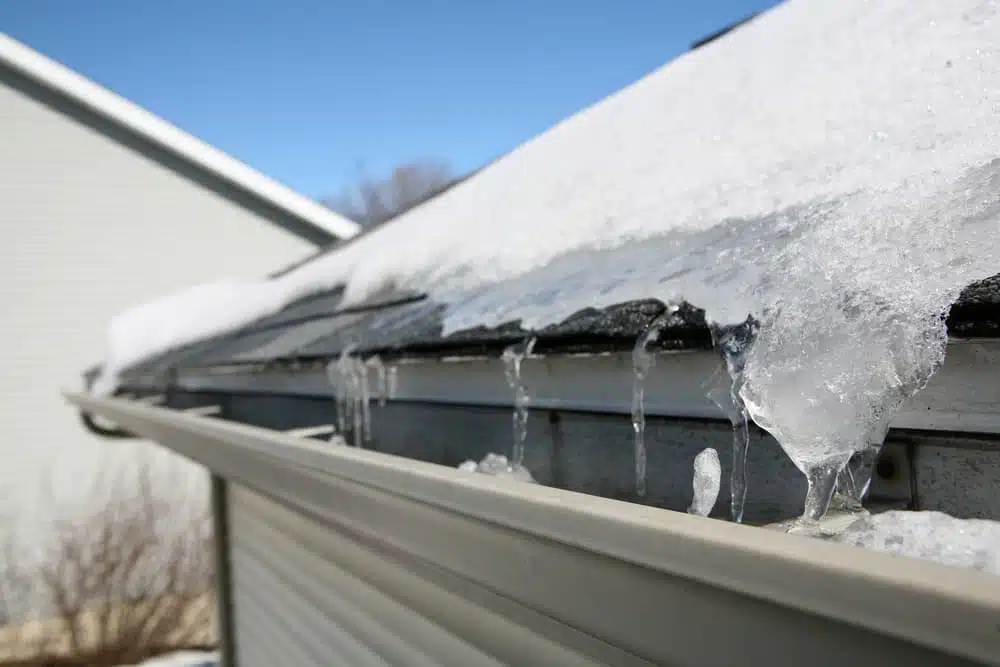
Winter weather is very unpredictable. The freeze and thaw cycle combined with heavy layers of snow can easily cause a number of roof-related problems that can end up costing you more to repair after the season has passed. To emphasize why it’s so important to get your roof inspected and repaired beforehand, here are some of the most common struggles that your roof might face this winter.
Contents
Leaky Flashings
Leaky flashings are one of the most common issues homeowners face here in our temperate climate. With long and harsh winters, most homes here in Canada are designed with a sloped roof to handle the heavy accumulation of snow and ice that we get each year. The metal strip of flashing which runs all across the roof to seal the ridges, chimney, and edges, can let moisture permeate underneath if it’s not sealed correctly. Flashing can also peel away from the roof over time which is why it should be inspected twice each year.
Mold and Mildew
If moisture pools on the roof and your attic isn’t properly protected and insulated, condensation can begin to form, causing mold and mildew spores to develop. These spores thrive in damp places. And without repair or adequate ventilation, this can lead to dangerous spores in your home, as well as wood rot and structural damage if it’s ignored.
Loose Shake and Shingles
The shake and shingles are your roof’s main line of defense against intense winter storms. When the wind picks up speed, it can start to tear the shake and asphalt shingles off, leaving areas of your roof exposed and vulnerable to damage. Check to see if there are any signs of debris from your roof around your home exterior. If you notice some, have it inspected and repair as soon as possible.
Tree Branches
If there’s a flash freeze or a major snowstorm blows in with lots of snow, any precarious tree limbs that are dangling near your roof can become a hazard. Even if they don’t fall, branches that constantly scrape the surface can lead to damaged shingles. They can also be an invitation for raccoons and other critters to nest for the winter. Trim away any branches that are within a few feet of your roof to ensure it’s safe.
Ice Dams in Gutters
Once moisture and snow accumulate along the roof, they eventually end up down towards the eavestrough. But as melting snow drips down and refreezes, this freeze-thaw cycle can cause ice dams that block the gutters from draining excess moisture away from the roof. They can also pull away from the roof with the extra weight added from the ice. To give your gutters the best chance of holding up, make sure to have them cleaned out each year at the end of the fall season.
Roofmaster is your one-stop-shop for all of your roof-related needs in Ottawa. Get in touch with us today to get a quote!









